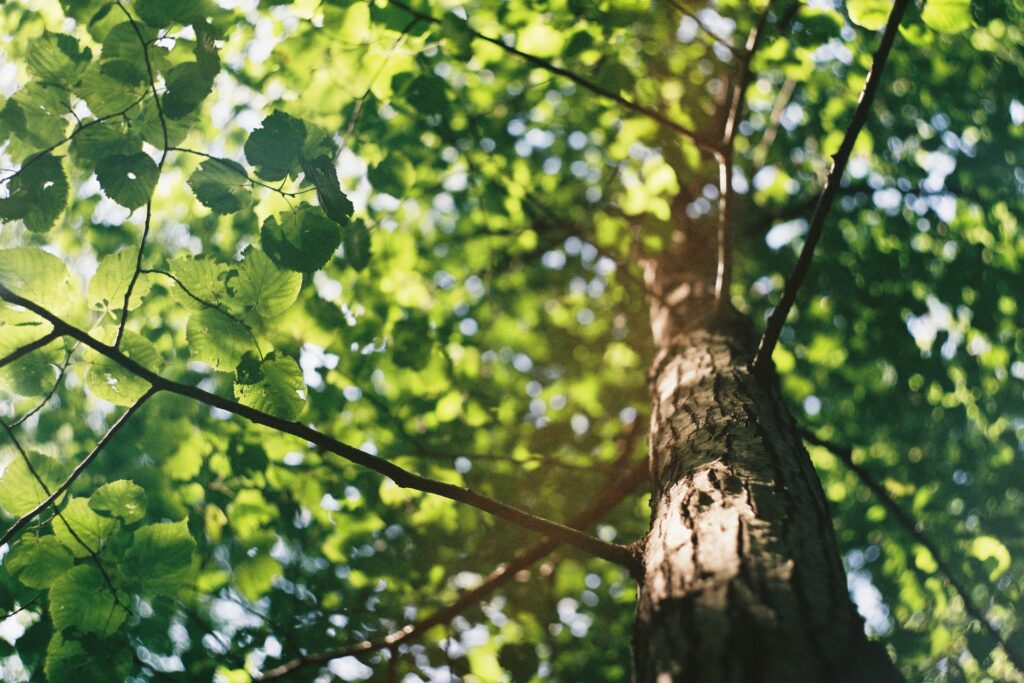How To Safely Reduce The Size Of A Tree
Trees are a staple of the British garden, so taking care of them is essential. They need regular maintenance to keep them healthy and in optimal condition. This includes occasionally reducing them in size to promote growth and health. You may also want to reduce the size of a tree if it is overgrowing the space in which it is planted or posing a risk due to its size. But how do you safely reduce the size of a tree?
You should contact a professional tree surgeon who will use the right reduction method for your tree’s requirements. These include thinning, crown lifting, pruning, crown reduction and pollarding. The tree surgeon will then carry out the work required with expertise and knowledge. It’s best not to reduce your tree’s size alone, as you could damage it and even put yourself at risk.
Read on to learn more about safely reducing the size of your trees with Broadleaf Tree Surgery.
When To Reduce The Size Of A Tree?
The best time to reduce the size of your trees will depend on several factors, such as the variety of trees, seasonality, disease, or even health. These factors will dictate what type of reduction should occur and how much work is required.
It is best to reduce a tree when dormant. This typically occurs between September and March, depending on the tree type. The trees are then able to have time to heal and begin flourishing during spring.
When Shouldn’t You Reduce The Size Of A Tree?
It’s best not to reduce the size of your trees during the growing season, between June and August. Reducing their size while your trees are growing could overwhelm them and stunt their growth. You might also cut off valuable shoots and buds.
Trees receive more sunlight, begin their blossom and start to expand their roots during the spring season. If tree reduction is performed during spring, there is a risk that the tree could become vulnerable to disease.
Why Reduce The Size Of A Tree?
You should reduce the size of your trees for many reasons, from keeping them healthy to the overall appearance. Some of the reasons you should reduce your tree’s size are:
- Light Level: Reducing your tree’s size can allow more light into your garden. It also allows light to pass through the tree, which helps promote growth through photosynthesis.
- Weight Reduction: Reducing your tree size through methods such as thinning and crown reduction will reduce the amount of weight on your tree’s crown. This will prevent damage to your branches and reduce the risk of them falling in a storm.
- Improved Safety: By reducing your tree’s size, you can improve the safety of your property. You are able to remove dead or overgrown branches before they pose a risk to your garden or home.
- Growth and Health: Reducing your tree size can help promote growth by removing dead, diseased or injured parts of your tree. This will allow new branches to grow and keep your tree healthy overall. It also prevents diseases such as ash dieback.
- Appearance: You can improve your tree’s appearance through size reduction as you can create a shape for the tree and help it to fit better into your garden.
Methods Of Reducing A Tree’s Size
There are different methods of reducing your tree’s size. Reducing your tree’s size can improve light in your garden and promote the growth of your trees while making them easier to maintain.
Pruning
Pruning is the easiest method of reducing your tree’s size. Pruning is cutting or clearing specific branches on your tree to improve health, growth and appearance. It removes unhealthy branches from your tree and helps decrease the hazard of overgrown branches. To learn more about this, read our post on pruning.
Crown Thinning
Crown thinning removes branches and leaves within the crown to promote growth and improve the appearance of your trees. The branches that are trimmed are often either dead, crossing another branch or growing into the canopy without providing for the tree. By thinning your tree, you reduce the risk of failure in heavy winds and create an evenly balanced crown.
Crown Lifting
Crown lifting involves the removal of low-hanging, overgrown branches. Lifting helps to decrease the risk of falling branches onto your property or pathways, increasing overall safety. Crown lifting allows more light into your tree and can help to improve your tree’s health overall.
Full Crown Reductions
Full crown reductions involve the removal of branches in the canopy, resulting in a smaller overall volume and tree size whilst maintaining the tree’s natural shape. The tree is pruned to the most suitable growth, removing the weaker branches to produce a natural and balanced crown.
Pollarding
Pollarding is pruning your tree back to the trunk to form a head of branches. Pollarding is done for several reasons, such as creating a formal shape, encouraging the production of stems with more colourful leaves and decorative bark, and producing larger than usual leaves.
Pollarding is risky when reducing the size of your tree; some downsides include a higher risk of disease, weaker shoot growth and the possibility that the tree will die during the process. It’s best to let a professional tree surgeon assess whether pollarding is suitable for your tree.
Professional Tree Surgery With Broadleaf Tree Surgery
If you need help with caring for your trees, why not get in contact with us today? Our team of professionals can help carry out any work you need on your trees and hedges, from deadwood removal to stump grinding. We will provide a free estimate on any service your trees require.
Alternatively, you can browse our service page to see what we offer or fill out our contact form for more information on our services.



